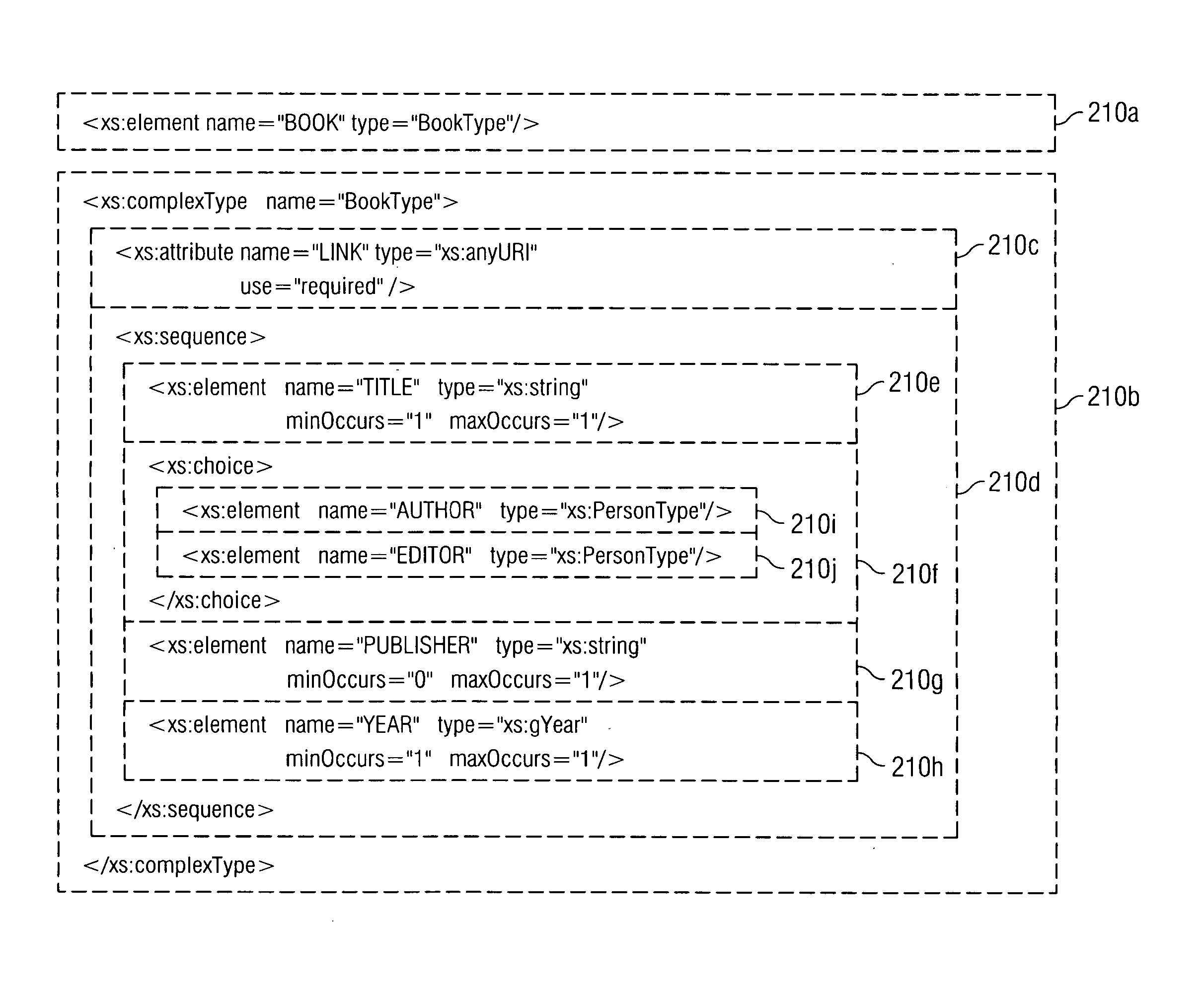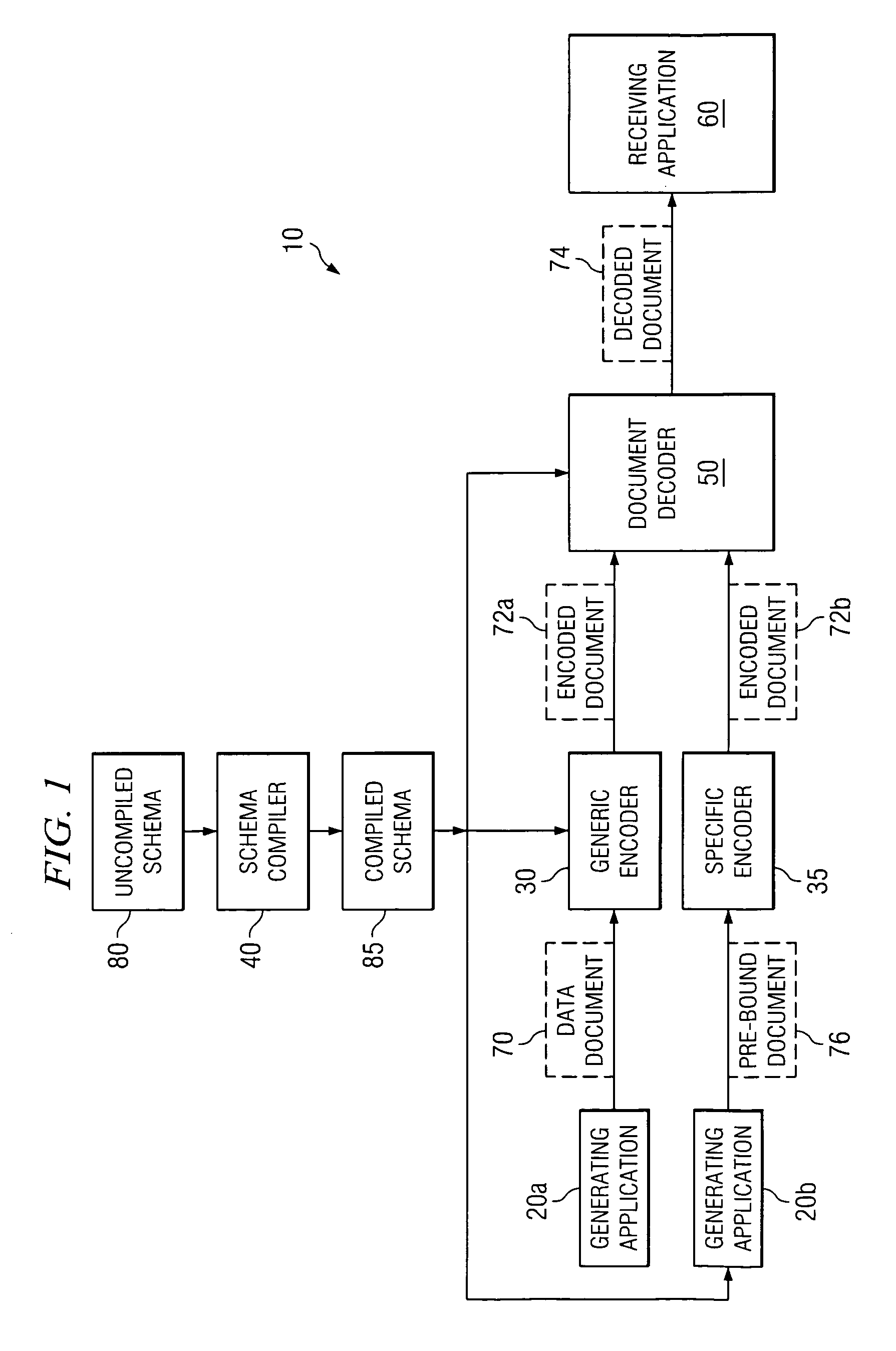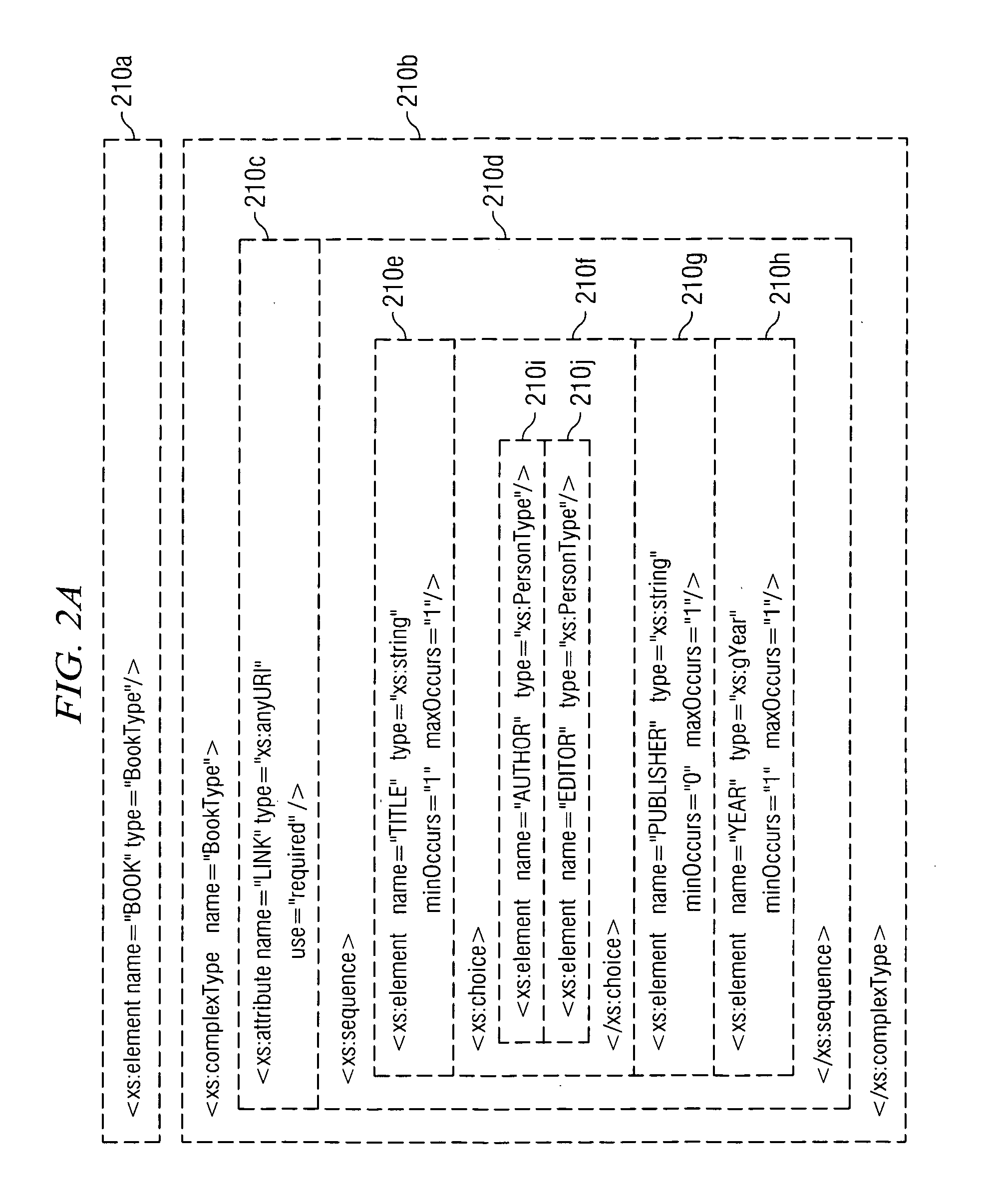Method and system for fast encoding of data documents
- Summary
- Abstract
- Description
- Claims
- Application Information
AI Technical Summary
Benefits of technology
Problems solved by technology
Method used
Image
Examples
Embodiment Construction
[0016]FIG. 1 illustrates a data processing system 10 operable to generate, transmit, and process XML data documents. Data processing system 10 includes generating applications 20a and b, a generic encoder 30, a specific encoder 35, a schema compiler 40, a document decoder 50, and a receiving application 60. Generating application 20 generates data documents 70 which generic encoder 30 or specific encoder 35 encodes for transmission to receiving application 60. Data processing system 10, in particular embodiments, utilizes compiled schema 85 and particular encoding and processing techniques to reduce information exchanged between generating application 20 and receiving application 60. As a result, particular embodiments of data processing system 10 may reduce the memory and processing resources needed to utilize information included in data documents 70.
[0017] Generating applications 20a generates data documents 70 that include data structured and formatted in conformance with the X...
PUM
 Login to View More
Login to View More Abstract
Description
Claims
Application Information
 Login to View More
Login to View More - R&D
- Intellectual Property
- Life Sciences
- Materials
- Tech Scout
- Unparalleled Data Quality
- Higher Quality Content
- 60% Fewer Hallucinations
Browse by: Latest US Patents, China's latest patents, Technical Efficacy Thesaurus, Application Domain, Technology Topic, Popular Technical Reports.
© 2025 PatSnap. All rights reserved.Legal|Privacy policy|Modern Slavery Act Transparency Statement|Sitemap|About US| Contact US: help@patsnap.com



